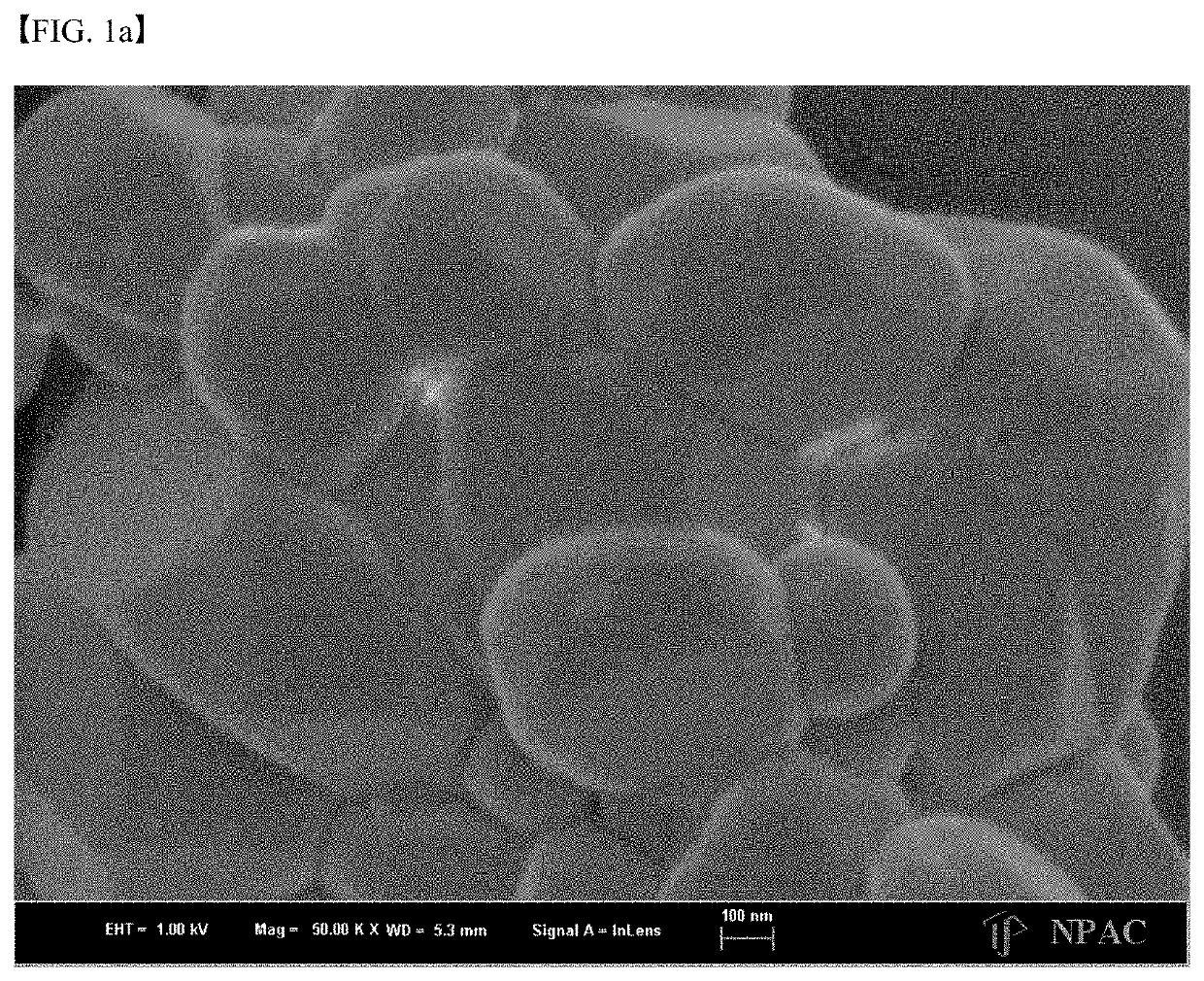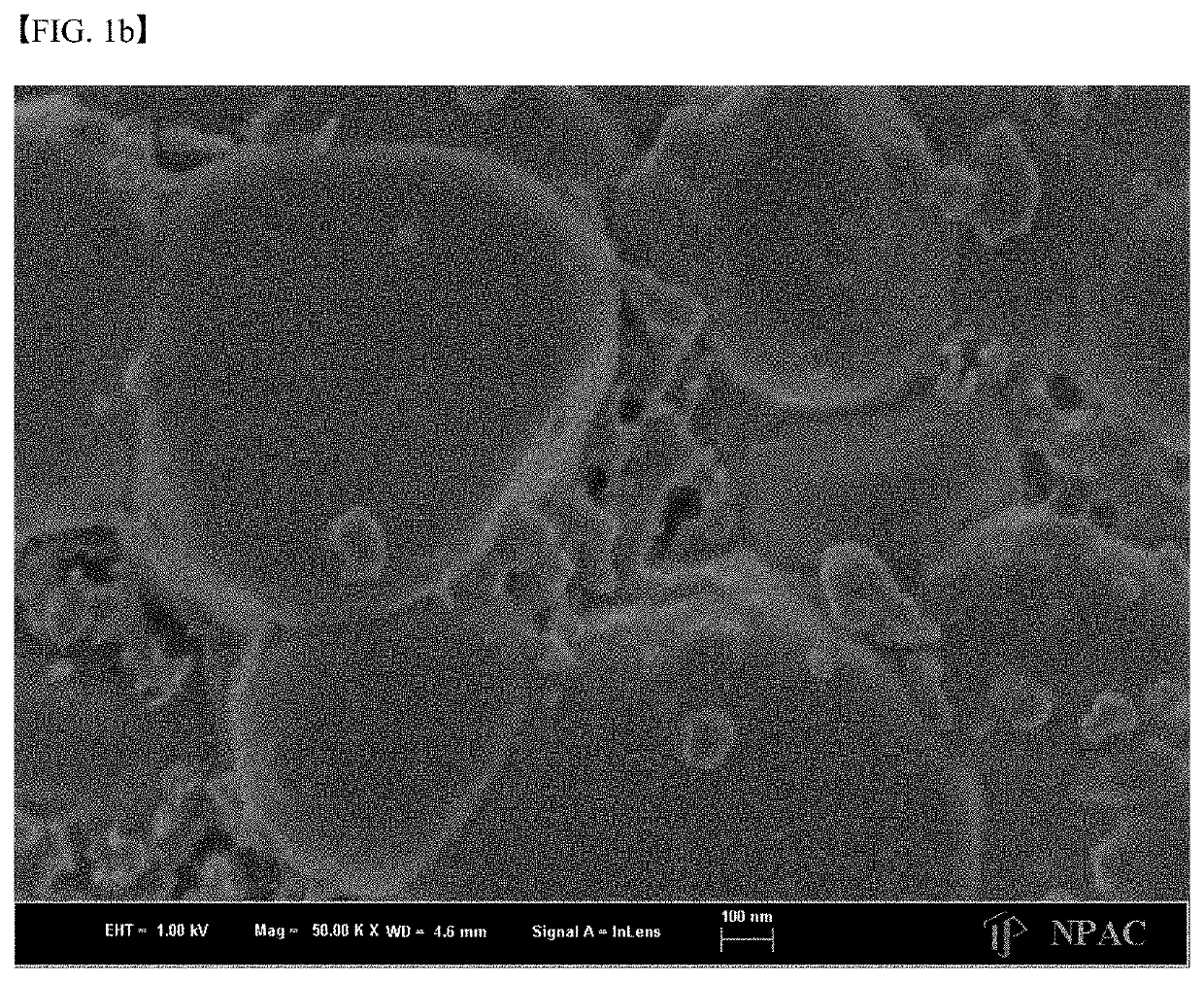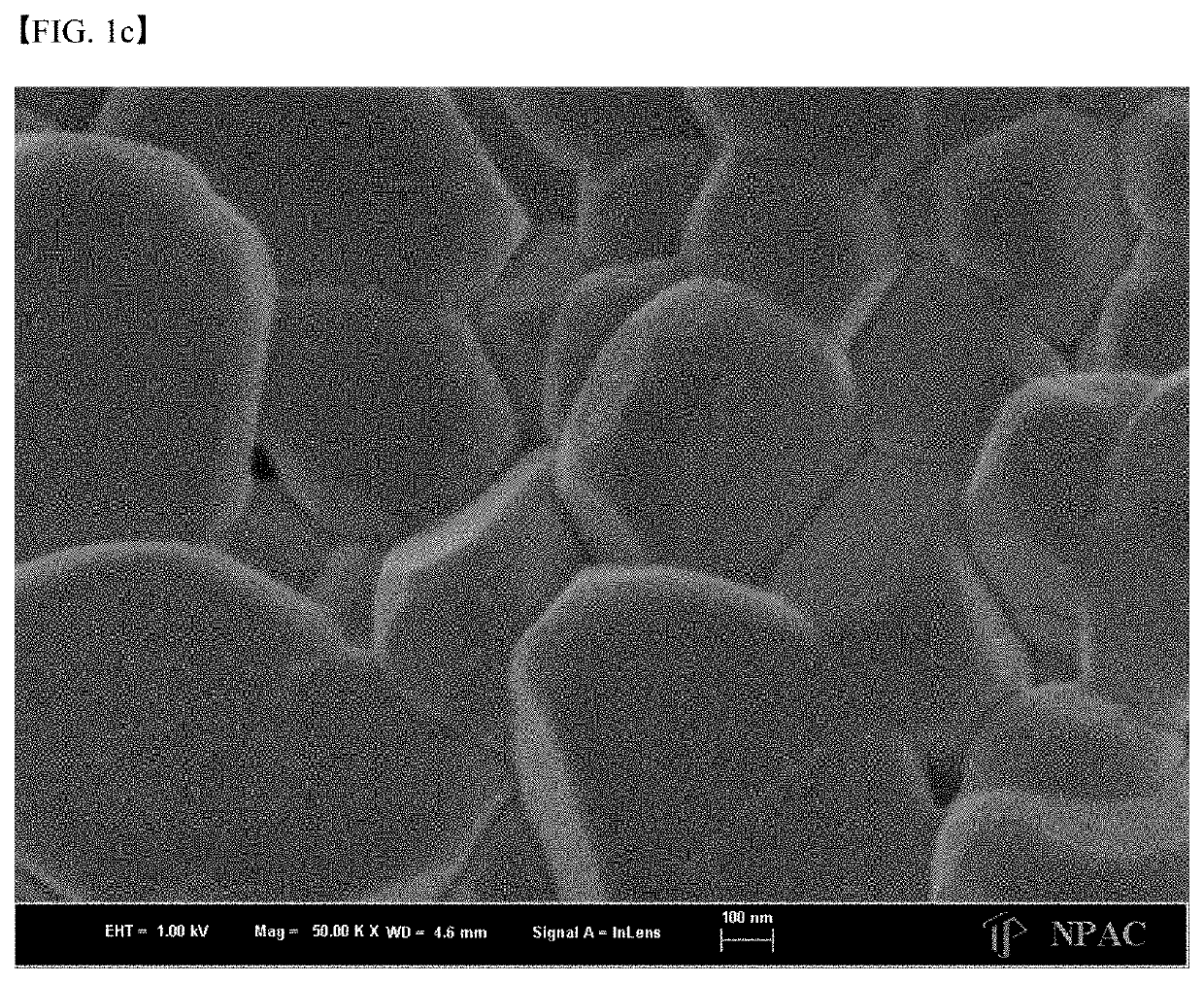Secondary battery and active material
a secondary battery and active material technology, applied in secondary battery servicing/maintenance, cell components, batteries, etc., can solve the problems of reducing the output, reducing the resistance of batteries, and deteriorating the basic characteristics of batteries, so as to prevent thermal runaway, improve thermal safety, and the basic characteristics of secondary batteries are not deteriorated.
- Summary
- Abstract
- Description
- Claims
- Application Information
AI Technical Summary
Benefits of technology
Problems solved by technology
Method used
Image
Examples
example 1
[0093]A positive electrode active material was prepared in the same manner as in Comparative Example 1 except that the precursor composition was Ni0.35Co0.30Mn0.35(OH)2 and the Si additive was added at a specific ratio (500 ppm).
example 2
[0094]A positive electrode active material was prepared in the same manner as in Comparative Example 2 except that the Si additive was added at a specific ratio (500 ppm).
example 3
[0095]A positive electrode active material was prepared in the same manner as in Comparative Example 1 except that the precursor composition was Ni0.38Co0.29Mn0.33(OH)2 and the Si additive was added at a specific ratio (500 ppm).
PUM
| Property | Measurement | Unit |
|---|---|---|
| molar ratio | aaaaa | aaaaa |
| temperature | aaaaa | aaaaa |
| temperature | aaaaa | aaaaa |
Abstract
Description
Claims
Application Information
 Login to View More
Login to View More - R&D
- Intellectual Property
- Life Sciences
- Materials
- Tech Scout
- Unparalleled Data Quality
- Higher Quality Content
- 60% Fewer Hallucinations
Browse by: Latest US Patents, China's latest patents, Technical Efficacy Thesaurus, Application Domain, Technology Topic, Popular Technical Reports.
© 2025 PatSnap. All rights reserved.Legal|Privacy policy|Modern Slavery Act Transparency Statement|Sitemap|About US| Contact US: help@patsnap.com



